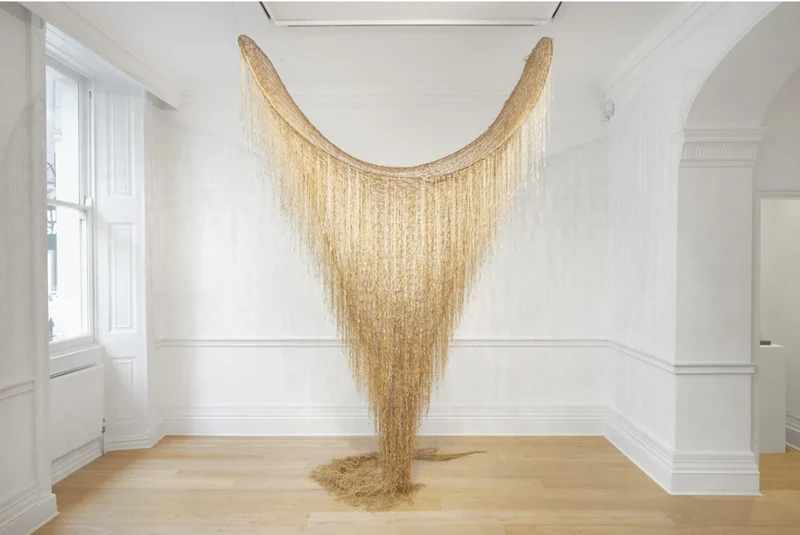Barbara Levittoux-Świderska


b. 1933, Poland
d. 2019
Barbara Levittoux-Świderska was one of the most important yet often overlooked textile artists who transformed tapestry from flat decorations to avant-garde installations. Born in Warsaw, Poland, Levittoux-Świderska came to prominence in the 1960s when textile entered into mainstream contemporary art. Like fellow Polish textile artists Magdalena Abakanowicz and Jolanta Owidzka, Levittoux-Świderska followed the Eastern European tradition, incorporating locally sourced materials and rural practices to improvise new textile art-making methods and forms.
Levittoux-Świderska studied painting and tapestry (in 1958 and 1959 respectively) at the acclaimed Academy of Fine Arts, the foundational site and training ground of the Polish Textile School, a post-war generation of artists who changed the perception and direction of textile art in Europe. This network undertook research on rural textile practice and responded to post-WWII material constraints through the incorporation of local materials, while also responding to repressive ideological shifts as part of a centralized government effort to promote a nationalist identity rooted in folk tradition. What emerged was a distinctly Polish and politically-charged weaving tradition that Levittoux-Swiderska continued throughout her practice.
Over the course of more than half a decade, Levittoux-Świderska created a cohesive body of sculptures and paintings that, through a focus on materiality, structure and form, added new dimensions to Polish textile art. While her early practice focused mostly on paintings, depictions of simple, everyday objects juxtaposed with geometric solids and clean, minimalist lines, Levittoux-Świderska shifted almost completely towards the creation of textile art by the 1970s. Coinciding with the wider Polish textile tradition, Levittoux-Świderska utilized materials close at hand, like pine needs or birch bark, nestled next to yarn, cotton and fabric. She wove or glued these natural fibres together with man-made ones, such as wire, plastic or industrial scraps, to create two-dimensional textiles that were minimal, intimate and emphasized the spatial relations between objects. The netting-like structures - imperfect shapes characterized by seemingly erratic, densely formed and dramatically entangled arrangements - portray a sense of 'emptiness,' revealing the skeleton of the weave and the 'thinking' behind the patterns.
Levittoux-Świderska's work has been exhibited widely since the early 1960s, when, following graduation from the Academy of Fine Arts, she participated in important group shows at prestigious institutions in Warsaw, including the National Museum, Museum of History, Palace of Culture and other regional state galleries of art. Between 1966 and 2013, she staged more than 40 solo exhibitions of her work, and took part in numerous group exhibitions in Poland and abroad, most notably 'Fibre Structures from Poland's New Wave of Textile Artists', which toured various venues across the United States including the Smithsonian Institute in Washington, D.C. Her work has featured in important biennales celebrating textile art, including the International Tapestry Biennales in Lausanne in 1975, 1985 and 2009, and she was included in every edition of the International Textile Triennial organised by the Central Museum of Łódź, Poland from its inception in 1975 until her last participation in 2012. Her work is represented in notable private and museum collections, including, amongst others, the National Museum in Warsaw and Poznań, as well as the Textile Museum in Łódź.In 2010, she received a life-time award for her achievements in textile.